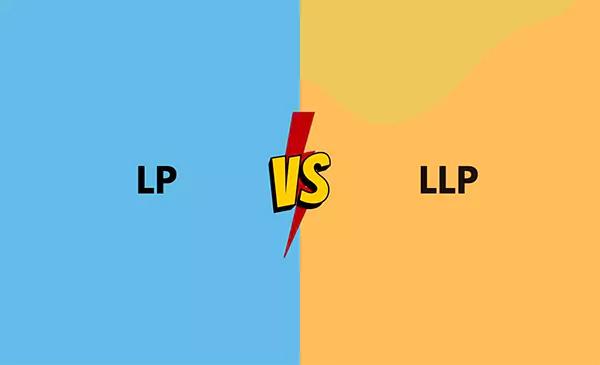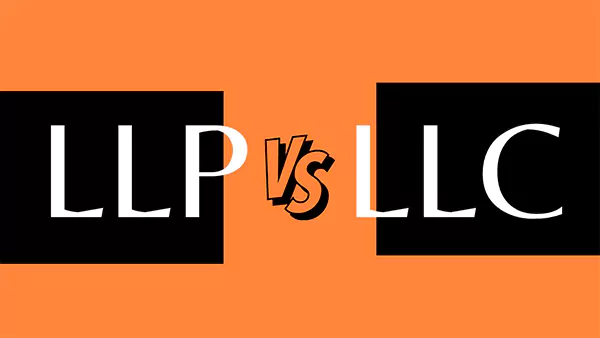LLP is a legal entity that offers all partners limited personal liability for the business debts and actions.
A Limited Liability Partnership allows all partners to manage daily operations and enjoy limited liability. It means their personal assets are shielded from co-workers’ misconduct and business debts. If you are looking for professional assistance in managing your business finances, services like accounting services can be very helpful.
Being an LLP member gives you peace of mind that you will not be risking your home, savings, or retirement fund. This structure is beneficial for investors who are involved in new business formation. This structure is beneficial for investors who are involved in new business formation and need expert bookkeeping services for accurate records.
That’s why I’ve compiled detailed information on LLP meaning, including:
- How does it work?
- How do partners receive profits?
- LLC Vs LLP and LLP Vs LP
So, stay till the end to gain essential knowledge about an LLP!
What is a Limited Liabilities Partnership?

A limited liability partnership (LLP) is a legal business structure that acts like a partnership, in which partners are protected from the personal debts of other partners. You can also explore tax return services to ensure compliance with your LLP’s obligations.
In an LLP, some or all partners have limited liability, similar to that of shareholders of a corporation. It means that partners are shielded from personal responsibility for business obligations, especially those that arise from other partners’ misconduct.
As a result, you can be a co-worker with other persons without fear of losing your personal assets due to another partner’s negligence and fraud. Unlike corporate shareholders, the partners have the power to manage and regulate business operations directly.
Thus, the combination of flexibility and protection from personal liabilities makes this structure a prior choice for firms like law, accounting, and architectural practices.
How Do LLP Partners Get Paid?

In LLPs, partners get paid in various forms, depending on the business policy, such as fixed salary or drawings, profit share, guaranteed payments, commissions, bonuses, and incentives. Some firms also integrate payroll services to streamline payments for partners.
Here are the following methods in great detail for your guidance. So take a look!
1. Fixed Salary or Drawings
As a partner, you may receive a fixed amount of money on your profit share, which is generally known as “draw.” It is an advanced payment that is considered self-employment income and is subject to an income tax return.
2. Profit Share
It is the most common method to share the limited liability partnership’s profits, depending on the predetermined ratio and contribution to the capital. The profit share is also based on the partnership legal agreement.
3. Guaranteed Payments
In some cases, you will receive guaranteed payments in an LLP, which is a fixed amount, regardless of your profit shares. It is beneficial for the person who has a low contribution of shares. You can maintain accurate bookkeeping services to track these commissions effectively.
4. Commissions
Additionally, you may receive payments or commissions when you successfully bring in new business or generate more revenue. It’s just a reward to motivate partners to do their best.
5. Bonuses and Incentives
Some LLPs offer performance-based incentives and bonuses to partners when they meet their targeted goals, and proper payroll services can manage these efficiently.
How Does an LLP Work?
There are four key features of an LLP: economies of scale, the LLP partnership agreement, LLP management, and taxation policy. As a founder, you should consider these aspects to determine whether it is the right fit for your business or not.
So take a look at the following section to explore how an LLP works for in-depth guidance.
1. Economies of Scale
If you form a limited liability partnership, you must focus on achieving two main aspects: the ability to limit personal liability and an increase in economies of scale.
Thus, the partnership structure helps you to save on costs related to rent, support staff, and equipment.
2. The LLP Partnership Agreement
After deciding on the business structure, the partners have to sign the LLP partnership agreement. This legal document involves the division of ownership, distribution of profits, management roles, designation of each partner, and regulations resolving disputes.
Sometimes, limited partners must vote for approval or amendments to the agreements, similar to an LLC structure.
3. LLP Management
The management structure is typically based on a member-managed approach, resulting in freedom to decide the designated roles of partners. So, as a partner, you are eligible to be involved in day-to-day operations.
Additionally, the LLP agreements divide decision-making responsibilities among partners in order to achieve economies of scale.
4. Taxation Policy
Limited Liability Partnerships are not taxed directly; instead, they use pass-through taxation. It means that partners are bound to file a personal income tax return with the IRS (Internal Revenue Service) on their shares.
This way, partners avoid double taxation but are responsible for paying taxes to the IRS on shares, including their personal income.
What is the Difference Between a Limited Partnership and an LLP?

Meanwhile, Limited Partnership and Limited Liability Partnership sound the same term, but they are different in structure, management, and liability protection.
Therefore, if you are also intrigued by their difference, read the breakdown table of LLP Vs LP.
| Feature | Limited Liability Partnership (LLP) | Limited Partnership (LP) |
| Partner Structure | All partners have the same status, and all are known as general partners. | It has two types of partners: one general partner and one limited partner. |
| Liability | Every single partner has limited liability, protecting their personal assets from business debts. | The general partner has unlimited liability for the business debts, and the limited partner doesn’t have any. |
| Management | All partners are eligible to manage day-to-day operations and business accounting. | A general partner is responsible for making decisions, and a limited partner is only a passive investor. |
| Formation | Statement of Qualification or a similar registration document with the state. | Certificate of Limited Partnership with the state. |
| Firms | Licensed professionals, such as accountants, lawyers, and architects, establish LLPs. | Best suited for investment groups and real estate partnerships. |
LLP Vs LLC: What is the difference?

An LLC (Limited Liability Company) is a business structure available for single or multiple owners having limited personal liability. On the other hand, an LLP requires at least two partners with personal liability for their own misactions.
Let’s dig deeper into the table below to learn more about the differences between a limited liability partnership vs llc.
| Feature | Limited Liability Partnerships (LLP) | Limited Liability Company (LLC) |
| Number of members | Require a minimum of two members. | Have one or more owners. |
| Liability | Partners are protected from the misconduct and negligence of other members. | Members are generally protected from all business debts and personal liabilities. |
| Industry Restriction | Restricted to licensed professionals like accountants and lawyers. | Typically open for any industry. |
| Management | Based on a member-managed structure with duties and responsibilities handled by partners. | It can be a member-managed or manager-managed structure, which offers more management flexibility. |
| Taxation | Pass-through taxation by the IRS. | Pass-through taxation, but can also elect to be taxed as a corporation. |
Pros and Cons of Limited Liability Partnership
As you noted above, an LLP structure provides flexibility and personal liability protection, but it may have limitations related to raising capital and penalties for non-compliance.
That’s why I’ve jotted down some advantages and drawbacks of Limited Liability Partnership that help you to make informed decisions.
Pros of Assembling an LLP
Let’s take a look at the following section to explore a wide range of advantages of creating an LLP.
- Personal Liability Protection: You are not responsible for the business’s debts or the misconduct or negligence of other partners.
- Pass-Through Taxation: The LLP itself doesn’t pay taxes. It passes through all losses and profits to the partners, who pay tax at their personal rates.
- No Double Taxation: LLPs can be more tax-efficient for partners in comparison to other business structures by avoiding entry-level taxes.
- Flexibility in Management: It offers flexibility in internal arrangements and how profits are distributed among partners. This helps partners to tailor agreements based on their preferences, rather than traditional approaches.
Cons of Assembling an LLP
Here is the breakdown of the drawbacks of creating an LLP. So skim through this section to take essential measures to avoid limitations.
- Limited Capital: LLPs cannot issue shares or equity like corporations, making it difficult to attract investors and venture capital for large-scale investments.
- Public Disclosure: The details, including the income of the members, financial accounts, or bookkeeping, are submitted to Companies House, which they may not wish to be public.
- Penalty for Non-Compliance: Even if an LLP doesn’t have an activity, it is required to file an income tax return. In case the limited partners fail to submit Form 8 or Form 11, they are obliged to pay penalties, which increase their tax liability.
Wrapping Up!
Limited Liability Partnership is a business structure restricted to only licensed professionals like accountants, lawyers, and architects. LLP meaning it requires a minimum of two partners who enjoy limited liability.
So, if you also plan to become a partner in an LLC, consider its financial transactions, cash flow statement, and other business obligations. It is beneficial for you to choose which LLC firm is suitable for investment.








